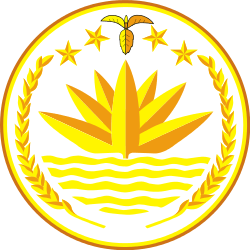Marma people
The Marma (Burmese: မရမာလူမျိုး) people, formerly known as Moghs or Maghs, are the second-largest ethnic community in Bangladesh's Chittagong Hill Tracts, primarily residing in the Bandarban, Khagrachari and Rangamati Hill Districts. Some Marmas live in Bangladesh's coastal districts of Cox's Bazar and Patuakhali, while others live in Tripura, India and Myanmar. There are over 210,000 Marmas living in Bangladesh. Since the 16th century, the Marma have considered the Bengal's Chittagong Hill Tracts their home, where they have established the Bohmong and Mong Circles (chiefdoms).
မရမာ | |
|---|---|
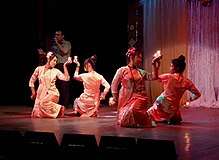 Marma dancers | |
| Total population | |
| 210,000 | |
| Regions with significant populations | |
| 157,301 | |
| Unknown | |
| Unknown | |
| Languages | |
| Marma, Bengali, Bamar | |
| Religion | |
| Theravada Buddhism | |
| Related ethnic groups | |
| Mog people, Rakhine people, Burmese people | |
one of the 135 officially recognized ethnicities in Myanmar (formerly Burma) | |
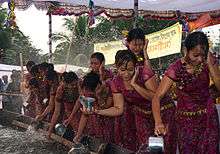
Endonyms and exonyms
The term Marma was officially coined by Bohmong Maung Shwe Prue in the late 1940s to the people of his circle. The term "Marma" is derived from "Myanmar."[1] In the Marma and Arakanese languages, Myanmar is pronounced Mranma ([mɹəmà]), not Myanma ([mjəmà]). In the Burmese language, the Marma are known as the Marama (မရမာ)
The Marmas were previously known as Moghs or Maghs for centuries because they were called Mogh/Magh by Bengalis for joining hands with Dutch and Portuguese pirates during their invasion in Chittagong. The Marmas considered these names to be pejorative, because it means "pirate," and thus assumed the new name Marma in the 1940s. Some Marmas in the Indian state of Tripura continue to self-identify as Marima, or as Moghs or Maghs, considering these terms to have derived from Magadha, the name of a historic Indian kingdom.[2]
History
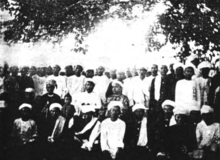
The Marmas migrated from present-day Rakhine State to the Chittagong Hill Tracts (CHT) between the 16th and 18th centuries, coinciding with the Kingdom of Mrauk U's conquest of Chittagong.[3] Records of the East India Company and others indicate that the Marmas migrated from the Kingdom of Mrauk U to Chittagong of Bangladesh in two phases of migrations during 14th to 17th centuries in the golden period of Mrauk U. In the first phase, during the Mrauk U Kingdom expanded to some parts of Chittagong Division. Secondly, Marma ancestors fled to Chittagong and settled down as the Arakanese kingdom was conquered and annexed by Burmese king Bodawpaya in 1785.
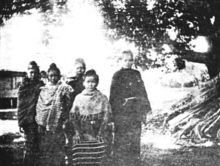
In 1971, following the Bangladesh Liberation War in which Bangladesh achieved independence, the country's majority Bengali Muslims began strategically colonising the Chittagong Hill Tracts, which has displaced native inhabitants.[4] Between 1978 and 1984, the government incentivised over 400,000 Bengali Muslims to settle in the CHT, by offering each family 5 acres of land and free food rations.[2] The Marma population has subsequently declined over the years, particularly in the CHT districts of Bandarban Chittagong and Patuakhali.[1] Between 1979 and 1997, Bengali Muslim settlers and the Bangladesh military carried out over 15 major massacres of Buddhist peoples in the CHT.[2] Due to the outbreaks of violence, communal and social unrest, many fled to the Indian states of Mizoram and Tripura, or to Burma (now Myanmar).[2] The Bangladesh government has also forcibly converted Marmas from Buddhism to Islam and destroyed Buddhist temples (kyaung), as means of integrating them into Bangladeshi society.[2] Amnesty International reports document systematic accounts of torture and extrajudicial executions of tribal inhabitants of the Chittagong Hill Tracts by security forces during 1989 and 1990.[5]
The rise of Islamic militancy in Bangladesh has exacerbated religious violence on the Marma community.[2] Between 2004 and 2013, Muslim extremists, in conjunction with the military, torched over 1,000 Buddhist homes and 18 Buddhist temples, displacing thousands of Marmas and killing 30 individuals.[2] In 2018, two Marma sisters, aged 19 and 14, were raped and sexually abused by members of Bangladesh Army in Rangamati Hill District.[6][7] Land grabbing has also impacted the Marma community. 34 acres of Marma farmland were seized by authorities in 2014 to build a Border Guards Bangladesh sector headquarters in Bandarban.[8] In 2018, over 100 acres of indigenous land inhabited by 42 Marma families was seized by Jasim Uddin Mantu, a hotel developer.[9]
Genetic studies
Genetic studies have indicated that the Marma populations share a high frequency of Indian and low frequency of East Asian specific maternal haplogroups, and have the highest haplotype diversity when compared with Tripura and Chakma populations, suggesting deep colonization of the region by Marmas.[10]
Culture
The Marmas are subdivided into 12 clans, named after the place from where they migrated.[11] These clans include the Ragraisa, consisting of Marmas living south of the Karnaphuli river, the Palaingsa from Ramgarh Upazila, the Khyongsa (ချောင်းသား) from riverside communities, the Toungsa (တောင်သား) from the hill ridges, and smaller clans including the Longdusa, the Frangsa, the Kyokara-sa, and the Talongsa (တလိုင်းသား).[3][2]
The culture of the Marmas is similar to that of the Rakhine people, including their language, food, clothes, religion, dance, and funeral rites. Marma men wear a sarong called lungyi, while Marma women wear a sarong called thabein.
Marmas mostly depend on agriculture, traditionally practicing slash-and-burn cultivation on the hills. Their belief in Theravada Buddhism is as deep as the Rakhine society's, with an emphasis on ritual practices in deities. Some Marmas also practice animism and Islam.[12]
Marmas follow the Burmese calendar. They celebrate the New Year, called Sangrain (သင်္ကြန်), which begins on the first day of Bohag.[13] They make sangraimu, which is a form of traditional cakes. They take part in Sangrain Relong Pwe (သင်္ကြန်ရေလောင်းပွဲ; water pouring), where young Marma men and women spray each other with water. Sangrai is celebrated in three days, On the 1st day, called Painchwai or Akro, homes are decorated with flowers. On the 2nd day, Sangrai Akya, Marmas participate in traditional sports, dances, cultural activities and hold meetings regarding community issues. They also go to monasteries to participate in the Buddha statue's bathing (cleansing) ritual on this day. On the 3rd day, called Sangrai Atada, they cook a vegetable dish made out of more than 100 ingredients, called hangbong (ဟင်းပေါင်း; pachan in Bangla).[14]
After death, Marma elderlies are cremated, while younger deceased Marmas are buried.
See also
| Wikimedia Commons has media related to Marma people. |
References
- "Marma". Voice of Jummaland. Retrieved 2018-09-18.
- I, Fonkem Achankeng (2015-09-28). Nationalism and Intra-State Conflicts in the Postcolonial World. Lexington Books. ISBN 9781498500265.
- Pain, Frederic (2017-08-09). "Towards a Panchronic Perspective on a Diachronic Issue: The Rhyme <-uiw> in Old Burmese" (PDF). Australian Journal of Linguistics. 37 (4): 424–464. doi:10.1080/07268602.2017.1350129. ISSN 0726-8602.
- "Ethnic violence in Bangladesh: assault on minority peoples continues - Asian Studies Association of Australia". Asian Studies Association of Australia. 2017-08-02. Retrieved 2018-09-18.
- "Human rights violations in the Chittagong Hill Tracts: An update" (PDF). Amnesty International. 1991-09-13. Retrieved 2018-09-18.
- "BANGLADESH: ENSURE IMMEDIATE SAFETY AND SECURITY OF THE TWO MARMA SISTERS WITH THEIR CONSULTATION AND CONSENT AND LAUNCH INVESTIGATION INTO THE SEXUAL ASSAULT ON THEM BY MEMBERS OF BANGLADESH ARMY". Amnesty International. Retrieved 2018-03-06.
- "Justice hard to come by for victims of sexual violence". Dhaka Tribune. 2017-11-24. Retrieved 2018-09-18.
- "100 indigenous families at a loss". The Daily Star. 2014-10-29. Retrieved 2018-09-18.
- "Last six Marma families evicted". The Daily Star. 2018-08-09. Retrieved 2018-09-18.
- Gazi, Nurun Nahar; Tamang, Rakesh; Singh, Vipin Kumar; Ferdous, Ahmed; Pathak, Ajai Kumar; Singh, Mugdha; Anugula, Sharath; Veeraiah, Pandichelvam; Kadarkaraisamy, Subburaj (2013-10-09). "Genetic Structure of Tibeto-Burman Populations of Bangladesh: Evaluating the Gene Flow along the Sides of Bay-of-Bengal". PLoS ONE. 8 (10): e75064. doi:10.1371/journal.pone.0075064. ISSN 1932-6203. PMC 3794028. PMID 24130682.
- "The MARMA". www.ebbd.info. Retrieved 2018-09-18.
- Skutsch, Carl, ed. (2005). Encyclopedia of the World's Minorities. New York: Routledge. p. 181. ISBN 1-57958-468-3.
- Barua, Sanjoy; Khan, Tamanna. "Blaze of 'Boisabi' colour". The Daily Star. Retrieved 1 July 2015.
- "Hill districts wear a festive look as Boisabi nears". The Daily Star. Retrieved 1 July 2015.
External links
- Ethnologue profile
- Photographs of the Marma people
- Khan, Sadat Ullah (2012). "Marma, The". In Islam, Sirajul; Jamal, Ahmed A. (eds.). Banglapedia: National Encyclopedia of Bangladesh (Second ed.). Asiatic Society of Bangladesh.
